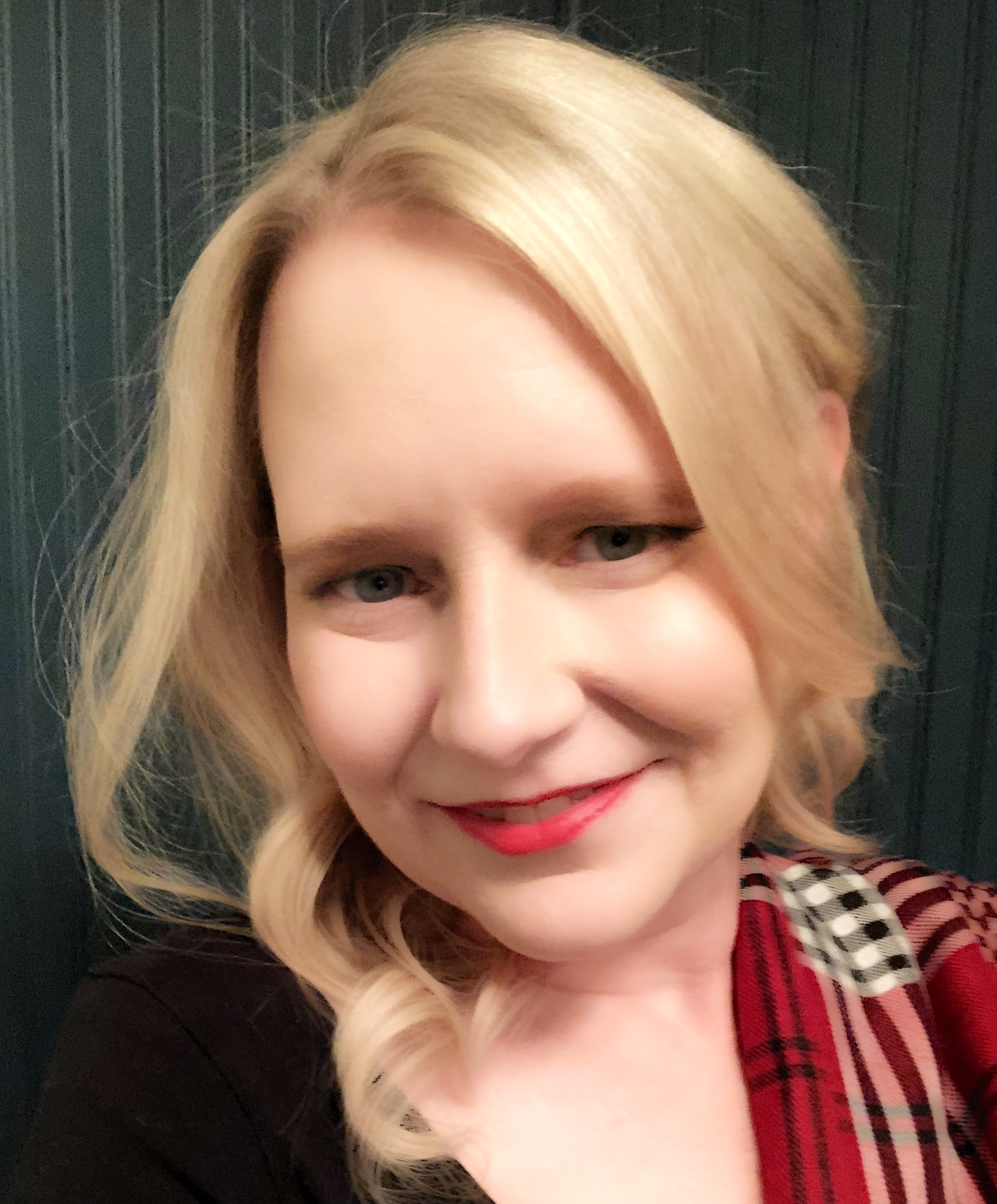- cross-posted to:
- privacy@lemmy.ml
- technology@lemmy.world
- cross-posted to:
- privacy@lemmy.ml
- technology@lemmy.world
God would never use VPN, he has nothing to hide.
Except his genitals, how do you know God isn’t a woman?
Read the book. Be it the bible, tora or koran. You dont have to read it very much, it’s in the beginning somewhere.
deleted by creator
Is God not powerful enough to switch sexes?
I was thinking of changing the gender after the fact but was to lazy to edit it.
In church I’ve been saying in the name of the father and the son, not mother and daughter, so that’s an easy assumption to make.
And how does the church know what to say…?
A patriarchal religion is going to put a male figure in charge of course.
The big religions have omnipotent or near omnipotent gods that can appear in any form or gender. One of their powers is usually shapeshifting. So they are whaterver sex they want, sometimes even none, like for example the christian god appeared as pillars of cloud or fire.
Those were just his jets. The pillars were fire in the night and clowd during the day.
Cause he fucks everyone
deleted by creator
But he works in mysterious ways.
Aren’t prophets basically god using a VPN?
Nope
deleted by creator
Muhammad on the other hand, doesn’t want you to know that he looks exactly like the letter “f”
someone should point out to them that a vpn is the technological equivalent of the burqa.
either ban both, or allow both.
Not like that
The Council of Islamic Ideology said the technology was being used in Pakistan to access content prohibited according to Islamic principles or forbidden by law, including “[…]websites that spread anarchy […].”
So they admit it’s not (only) about morals, but also (or mostly) about their position of power not being threatened.
BTW: By blocking access to the internet, they stop people from following the order in the Quoran which states that people should educate themselves.
It’s almost as if they would tailor their religious doctrine to suit their own needs. Who could have imagined such a thing could happen.
they stop people from following the order in the Quoran which states that people should educate themselves.
That’s the beauty of the major world religions. When you have power in your hands you can pick and choose what you want to honor and make it public policy, and there’s nothing the plebs can do about it.
Yeah, it fits perfectly with the other thing they don’t want their people to know about (anarchy).
A Mastodon user I follow recently posted that there are 3 types of laws. I think that is an interesting framework.
What Pakistan is doing here is definitely a “power law”.
Encryption is totally and completely haram
Which is super fucking ironic:
David Kahn notes in The Codebreakers that modern cryptology originated among the Arabs, the first people to systematically document cryptanalytic methods.[15] Al-Khalil (717–786) wrote the Book of Cryptographic Messages, which contains the first use of permutations and combinations to list all possible Arabic words with and without vowels.[16]
The invention of the frequency analysis technique for breaking monoalphabetic substitution ciphers, by Al-Kindi, an Arab mathematician,[17][18] sometime around AD 800, proved to be the single most significant cryptanalytic advance until World War II. Al-Kindi wrote a book on cryptography entitled Risalah fi Istikhraj al-Mu’amma (Manuscript for the Deciphering Cryptographic Messages), in which he described the first cryptanalytic techniques, including some for polyalphabetic ciphers, cipher classification, Arabic phonetics and syntax, and most importantly, gave the first descriptions on frequency analysis.[19] He also covered methods of encipherments, cryptanalysis of certain encipherments, and statistical analysis of letters and letter combinations in Arabic.[20][21] An important contribution of Ibn Adlan (1187–1268) was on sample size for use of frequency analysis.[16]
Ahmad al-Qalqashandi (AD 1355–1418) wrote the Subh al-a 'sha, a 14-volume encyclopedia which included a section on cryptology. This information was attributed to Ibn al-Durayhim who lived from AD 1312 to 1361, but whose writings on cryptography have been lost. The list of ciphers in this work included both substitution and transposition, and for the first time, a polyalphabetic cipher[23] with multiple substitutions for each plaintext letter (later called homophonic substitution). Also traced to Ibn al-Durayhim is an exposition on and a worked example of cryptanalysis, including the use of tables of letter frequencies and sets of letters which cannot occur together in one word.
https://en.wikipedia.org/wiki/History_of_cryptography#Medieval_cryptography
But then Pakistanis aren’t Arabs…
Decryption? Also Haram.
Really wish our species could evolve past this moronic, religious bullshit.
Its not about religion, its politics. A few years ago the Pakistani military overthrew a very popular prime minister who publicly said that it was the military behind his removal. Then slowly and gradually there was more and more evidence behind military involvement which as a result, made the public anti-military. They have been kidnapping and torturing anyone critical of them.
But the more they oppress, the more people become anti-military. It got to the point that in february the government blocked access to twitter because of anti-military sentiment, so people started using VPNs. Now this “religious body” which is government appointed claims to block VPN because “people are watching immoral things via VPN”. But in reality, it is to stop people organizing protests.
Also a governmental body can not decide what is islamic or not, thats not how islamic law works. It has to come from islamic scholars and there needs to be consus on it.
I don’t think any major islamic scholar who lives inside pakistan has signed or approved this message even though they want to stop porn they know its not about stopping porn, its about making it difficult to criticize the military.
Its not about religion, its politics.
It’s about religion. In a theocracy religion is politics, and law, and culture too.
Religion isn’t something that empowers people to do more or live more freely. Religious dogma is nothing more than a set of arbitrary laws and norms, written and decided by man, but given the weight and authority of god(s)–the fear of eternal damnation in the afterlife being the only way that people knew to keep others in line in a world devoid of secular laws.
How did we convince women that they were lesser beings throughout human history? Why do we consider some forms of consensual adult sexuality to be morally wrong? Why do we believe that human beings are destined and entitled to live on this planet forever no matter how poorly we treat it?
The answer is religion. Religion is mass delusion, used mainly as a tool of oppression. Socrates was sentenced to death by a jury of Athenians for thought crimes against Athena, showing that religion, democracy and justice simply do not mix. Thousands of years ago (or more) gods and religious law were the inventions that ushered humanity into the post-truth world that we live in today.
Look we can criticize religion for its issues all we want but in this specific case, they are using religion as a tool to get what they want. If it weren’t for religion, they would use something else.
“Terrorists are using VPNs to evade law enforcement”
Or maybe something racism related
Fascist/authoritarian governments always use something to control the public.
they are using religion as a tool to get what they want.
This is what religion has always been used as. Religious law existed before civil law, because it’s easy to get people to do what they’re told if they believe that their godlike creator will punish them eternally for breaking the rules.
Again, how did people convince the world that gay sex is not only taboo but something to be entirely shunned and punished?
You tell them that it’s a sin before the eyes of “God”, who in his anger will turn you and anyone who even looks in your direction into a “pillar of salt” or whatever. Remember the existence of “sodomy” (read: homosexuality) in Sodom and Gomorrah wasn’t just something bad, it was an mortal sin that supposedly wiped entire towns off the map, as they want you to believe that what your neighbor does in their bedroom isn’t just their own business but also an existential threat to your entire society. In the literal interpretation of all 3 Abrahamic Religions, it’s not enough to avoid homosexuality yourself, it has to be eliminated from society entirely lest we all end up like Sodom and Gomorrah…
And for what? Obviously we all know that the story of Sodom and Gomorrah is pure bullshit, even many religious people today hopefully don’t take it literally…
But the simple truth is that someone, thousands of years ago, felt disgusted by homosexuality and created a big lie about it in order to convince people that gayness anywhere in society would eventually bring about God’s wrath. And that utter fucking bullshit has lead to thousands of years of fear, discrimination, violence and hate, lasting even today in various degrees throughout the world. Humanity chose to go down this path when we chose to believe in religious lies.
Because THAT is exactly what religions does–that is what religion was designed to do: to keep people in line, to oppress undesirable people and qualities out of society, to avoid coming face to face with the unknown, and to impose the will of the few on the populace at large. Religion tells people what to eat, what to fuck, when and how they can listen to music, how to live and how to die. Outside of a few exceptions, it’s mostly a toxic ideology that empowers nobody and oppresses billions of people all over the world, and to top it all off, it’s just a bunch of fake, make-believe bullshit.
Call it “stories that people are taking way too seriously”. I’m sure that you can think of other stories that people take way too seriously too, that have nothing to do with religion.
I think that we might be seeing the power of propaganda there. Consider that the science of propaganda is very old. Thousands of years old. There’s population-control psychology there. It’s got hooks.
(On the flipside, imposing a set of rules for moral behavior is a good thing. People can be animals. And if you need to cite an old story about gods and wizards to give those rules some oomph then so be it.)
No, it’s definitely religion. Always has been.
Do you understand that they are using religion as an excuse? If that wasn’t an option, they would just use something else.
That’s exactly what organized religions are designed to do in action, crowd control
Thing is privacy is protected in Islam, this has nothing to do with religion.
It serves a need. Get rid of the need and you’ll get rid of the religious bullshit. But if you get rid of the religious bullshit without getting rid of the need, some other kind of bullshit will crop up.
Nobody needs religion.
Religion isn’t the need. Social interaction and the feeling of belonging and belief are the needs. Religion can and does fill that for many.
And before you attack me, I’m atheist.
But other things can and do too, so religion isn’t necessary. That’s the point.
Nobody said it was. Just that it does meet some needs.
Until you somehow convince those who have those needs that religion isn’t the correct way to meet those needs, you’re not going to get anywhere screaming that religion isn’t necessary. Those people firmly believe it is as it meets those needs for them and don’t have something else to do so.
Nobody said it was.
Well that’s just not true, but ignoring that…
I didn’t scream anything, neither did the OP that started this. They stated it calmly and plainly. Obviously religion serves a function in society, but so does slavery. I’m not trying to convince anyone to give up their long-held beliefs, I’m simply defending my interpretation of reality as objectively as I can. Just like coffee, alcohol, and black market sex rings, no one needs religion. The only reason I could think of that you would want to argue against that position is if you believed it wasn’t true. But it is. 🤷♂️🤷♂️🤷♂️
Well that’s just not true, but ignoring that…
No. Let’s not ignore that. If you’re going to call someone a liar, own up to it. The comment that spawned this chain says verbatim
It serves a need.
It being “religion” and “a need” would imply another, different “need”. Otherwise it would have been simpler and more direct to say something like “Religion is a need”.
I didn’t scream anything
Coming back and repeating the same shit that I just addressed from the previous comment … Constant repetition is literally someone shoving fingers in their ears and scream “LALALALALALA”. You even did it again in this post by stating “no one needs religion” when I already addressed that and even agreed with that sentiment, but wanted to specifically caveat why religion would count for “It serves a need”.
Nobody said that anyone “needs” religion. Quite the contrary. The statement is “religion fills needs” to put it another way. I even clarified and made it clear that if you can find something else that fills the needs for those people that you could likely replace religion. But for some reason you keep trucking forward with your comments acting like someone said something they didn’t.
The only reason I could think of that you would want to argue against that position is if you believed it wasn’t true.
What the fuck logic is this? So I must believe that Religion is a need then? I’m atheist. I stated that outright from the beginning in my first post on this thread. Fuck “God”, “Yahweh”, “Mohammed”, or any other god that you or anyone else believes in, they’re all fake. I clearly don’t believe that religion is a “need”.
Given its vast popularity, I expect that some would argue otherwise.
Painting baby toys with lead was pretty popular for awhile, so was filling your house with asbestos. Don’t confuse popularity with necessity, you might get cancer.
The lead paint and the asbestos both served a need. For colored toys and insulation, specifically. And then we found a better way to serve that need. It isn’t a dumb need.
Don’t assume that everybody who sees things differently is an idiot.
I didn’t call anyone an idiot, I just made the point that something being popular in society doesn’t even make it good for society, much less necessary. Just look at fentanyl, or network primetime television.
You know how some people make the claim that atheism is a religion? This is why. People who think that anyone who believes something different from them is a moron and/or in need of conversion. I don’t like it when religions behave like this, and I don’t like it when nonreligions behave like this, either.
Respectfully, you think I’m denigrating Islam because it’s different from what I believe?
No.
I’m simply pointing out what, to anyone who wasn’t raised in it, is obvious stupidity.
Muslim here, this “ruling” is nonsense and is just one dumb political opinion that the rest of the Muslim world is mocking. This isn’t Islam.
Sorry if I misunderstood. I interpreted your comment as saying that all religion was moronic bullshit, which would be in line with what I said.
If you meant that this particular religious behavior is moronic bullshit, I completely agree. I just don’t hold the view that every religious person is a moron because they believe in a religion.
All religions are moronic bullshit. I’ll say it.
Religion is just codified superstition. Aka moronic bullshit
All religions are moronic bullshit. People are free to believe what they like, no one has a need for rules that tell them how to believe.
Not all religion is bullshit, but there is a lot of crossover between religious teachings and bullshit. That’s why they invented the word ‘faith’, because they are self-aware of the incredulousness of it all.
Like the utter bullshit in this article, as if 7th Century teachings have anything to say about VPN’s.
Using allegory as a moral proxy is fine. And even a really great way of making complex or dry topics more approachable.
What is not ok is when you take allegory as literal, such that you actually believe that there is a sky wizard who will punish you for showing your hair in public. What is incredibly fucked up is when you then project that literal belief to a prescriptive action framework which commands you to murder heretics.
I love this comment.
My related anecdote is that I studied Aikido for many years, and there’s a lot of woo-woo in it. Energy, and Ki and whatnot. At one point (I was taking physics at the time) I realized that Aikido of all about directing momentum and force, and force as levers on body parts, and that you could probably calculate all of the various ideal angles for maximum conservation of momentum, and angles for balance points… and I realized that all of the woo-woo was a simplification of all of this that allows people to think about all of these things in real time and intuitively, rather than getting locked up in the theory.
I doubt that was the process and intention of the inventor, and a lot of practitioners believed in Ki or Chi or magic juice… but it’s all just physics boiled down to something people can easily visualize. And, yes, the problems start when people begin believing the magic juice, and start proclaiming that they can influence someone’s chi from a distance, or some shit. That’s a far cry from: if I bend your wrist this way, it’s incredibly painful and you’re going to fall over to stop it, or break your wrist.
Which includes pregnant women.
It wasn’t a command. The Crusades were an offer to make murder a prayer for salvation.
Was quite popular. Didn’t matter if they were Saracens, Jewish folks, or even other Xians by the end.
Those are certainly words. Maybe you should stick to painting with crayons, though - the result might make more sense.
So if I call you a moron for not believing that the Easter Bunny is a real deity, you shouldn’t criticize me?
Religious people literally believe in things that mostly are no longer believed in after someone reaches about 10 years of age. All this thing’s, Santa Claus, slender man, you name it, it’s all dropped as fantasy yet religion keeps being reinforced causing actual sane adults to believe that there is a magical sky being.
As this article goes to show, it’s a great tool to control the populace, it has little real world value.
deleted by creator
I’m pretty sure Mohammad, Jesus, Buddha, and all the other gods would be concerned if they saw my porn history.
deleted by creator
Thank you for teaching me that I’m actually very judgemental. That’s important to know.
Let he who is without larvae-based pornography in his search history cast the first stone.
deleted by creator
That’s the beauty of religion - if our gods and prophets did not materialize to contradict what we are saying in their name, that means they approve.
US Christians: “write that down!”
The “protect children online” act or whatever. Ugh.
KOSA. But yeah, same level of religious fuckery. They want to impose big brother because it’s easier to root out dissent.
Won’t be long now, unfortunately.
I’m really interested in reading the part of the Quran that forbids VPNs.
“Thou shalt not taketh sponsorships from NordVPN”
“In this religion, we use ExpressVPN!”
Quran, probably
NordVPN is a scam, they will prevent you from cancelling your plan
“It is not enough that Allah knows everything you do. We must also know.”
“That sounds like blasphemy to me.”
“Uh…”
No it isn’t. The right to privacy is protected in Shariah law. Either something nefarious is at play here, or the religious body was misled on what VPN is.
Sources for those not familiar with Shariah law, I actually studied it and was tested on it:
https://www.al-islam.org/islam-and-rights-privacy-territory-abbass-khajeh-piri/realm-privacy-islam
and this is from a Pakistani university:
It’s the government’s pet religious authority. They will produce any opinion that the government wants. Is there a name for these kind of scholars in Islamic history?
Yes in Arabic they are derogatorily called وعاظ السلاطين the sultans’ preachers.
For context: this “religious body” is governmental.
In pakistan, military has gotten so powerful that they literally kidnap and torture you for being critical of them. And if you live outside pakistan they kidnap and torture your family members, demanding you to remove your posts.
And recently pakistani people have started to become more and more anti-military. So they are using VPNs to hide their identity to protect themselves.
This “religious body” is making it seem like this is to stop porn but in reality its about stopping people from being critical of military rule.
Edit: they banned twitter in february because people were organizing anti-military protests there. So the people started using VPNs and now they want to ban VPNs.
I wonder if me, and American, looking at Pakistan is like how Europeans look at America… Government and police are crazy. But the food, culture, and people are probably nice.
Religious nuts want to creep on your internet usage too.
The craziest part is that this is only happening in Islamic countries and absolutely not happening in the West.
Dont we have political nuts that want to creep on our internet usage and even our DM’s?
I think they were being sarcastic
“VPNs are haram but tor browser truly is the work of Allah himself”
Some guy, maybe.
Baqarah Ayat 18: No one shall use VPNs
Something something sneaking into other people’s houses is haram therefore VPN is haram?

















